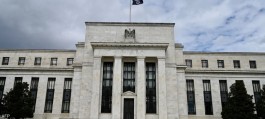The chances of the US Federal Reserve not cutting interest rates this summer are increasing, amid a batch of better-than-expected economic data.
Recent comments from Fed officials have also been pointing away from any near-term easing. Moreover, traders have increasingly discounted the possibility of a September rate cut, and are now pricing in a single cut by the end of 2024.
Quincy Krosby, chief global strategist at LPL Financial, said in public remarks that the economy may not be as calm as the Fed would like. “The market takes every piece of data and translates it into how the Fed sees it, so if the Fed is data-dependent, the market is likely to be even more data-dependent,” she said.
Over the past week or so, the data has sent a clear signal that economic growth is roughly flat if not rising, and that inflation is ever-present as consumers and policymakers remain wary of the rising cost of living.
An example of this is the jobless claims report, which a few weeks ago hit its highest level since August 2023, but has since declined to a trend that suggests companies have not stepped up their layoffs.
There is no reason to cut interest.
Recent economic data and the Fed minutes suggest that policymakers still lack the confidence to cut rates, and that there is an unspecified minority who might be open to raising rates if inflation deteriorates.
Federal Reserve Chairman Christopher Waller said a series of economic data shows that inflation appears to be declining, and that he does not believe further interest rate hikes will be necessary.
But he stressed that he would need some convincing before he would support cuts anytime soon.
Bank of America economist Michael Gapen said recent comments from Fed officials and the minutes of the Fed's meeting make it clear that upside inflation surprises this year, coupled with strong activity, are likely to rule out rate cuts for now.
But at the same time, there is a strong consensus that monetary policy is restrictive, and that raising interest rates is also unnecessary.
BofA believes the Fed may wait until December to start cutting rates.
Waiting for upcoming data
Analysts are awaiting data on US personal consumption expenditures next week, the Fed's preferred measure of inflation.
If our forecasts are correct, inflation will decline slightly on an annual basis to 2.75%, Gabin said. There are very few signs of progress toward the Fed's 2% target.
At the beginning of this year, market expectations indicated six rate cuts this year, but these expectations currently indicate a 60% chance of implementing only one cut, according to the CME Group tool.


































